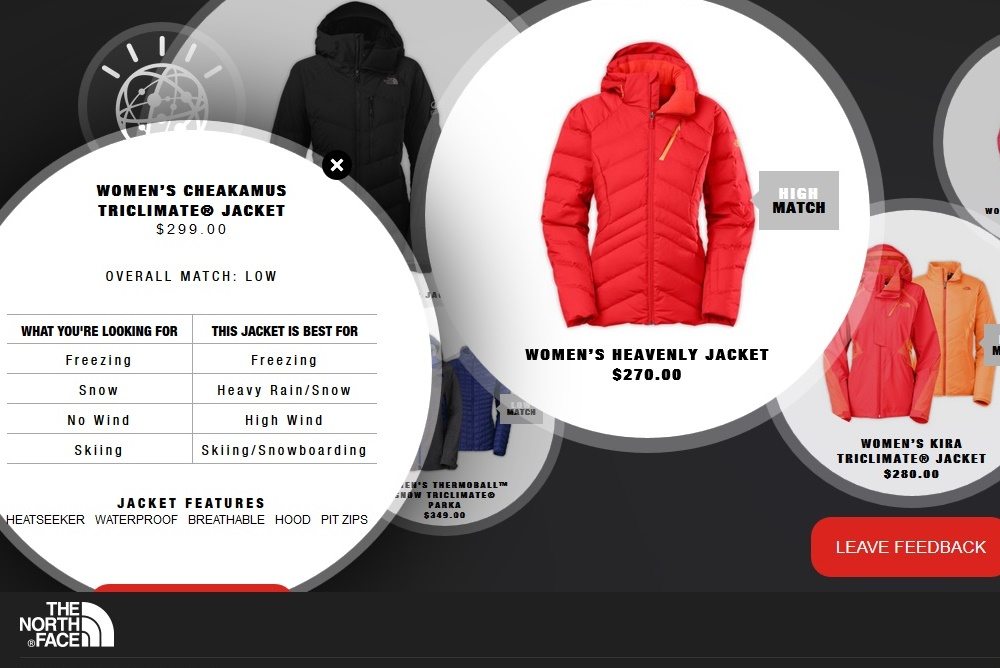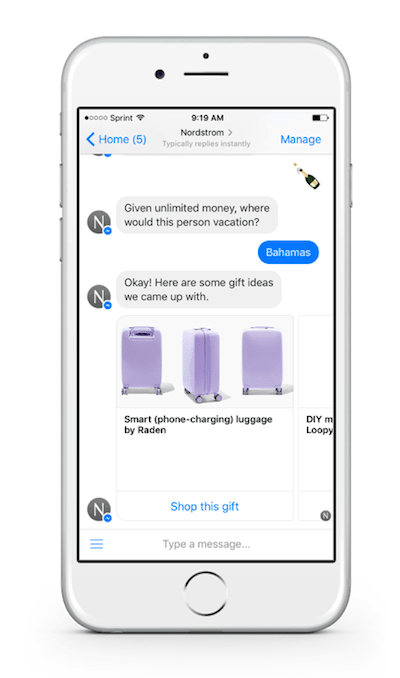
The global fashion industry is valued worldwide at an estimated $3 trillion and representing 2 percent of the global Gross Domestic Product. The World Bank categorizes apparel in the broader category of manufacturing which represented 15 percent of the global GDP in 2016. eCommerce has shifted the industry from strictly brick-and-mortar (and catalog) to a more mobile and social media-friendly space, which has opened up in applications of AI in fashion that may help to mold the future of the customer experience.
However, no sources have taken a comprehensive look at the impact of AI among the leading apparel brands. We researched this sector in depth to help answer questions business leaders are asking today:
- What types of AI applications are currently in use by leading apparel brands such as Dior and Nike?
- What (if any) results have been reported on AI applications implemented by leading apparel companies? What is the ROI if these applications?
- Are there any common trends among their innovation efforts – and how could these trends affect the future of fashion?
This article aims to present a comprehensive look at the the five leading global apparel companies using AI. Based on the Forbes’ 2017 Global 2000 ranking of the world’s biggest public companies, we researched each of the top 20 “apparel companies” (as ranked in revenue by Forbes) for evidence of AI applications. In this article we present the top five companies that show evidence of using AI. We have included their Forbes rankings in parentheses next to each company name.
Through facts and figures we aim to provide pertinent insights for business leaders and professionals interested in how AI is impacting the fashion industry.
Before delving into the applications, we’ll present the common pattern that emerged throughout our research in this sector.
Artificial Intelligence in Fashion – Insights Up Front
The most popular AI application from the top five industry leaders currently using AI appears to be Chatbots/AI assistants. Here are some of the more common use-cases among the largest fashion brands we studied:
- Responding to customer service inquiries and providing suggestions related to product searches through a social media messaging platform (see Dior and Nordstrom below)
- Helping users navigate products online and/or in-store and routing customers to sales representatives (see VF Corporation and Macy’s below)
- Virtual assistant to encourage exercise/behavior adherence (see Nike’s unique application below)
It is important to note that these applications are the most popular because they have been announced by the companies or covered by the press. There may be additional AI applications that have not yet been reported.
In the full article below, we’ll explore the AI applications of each fashion company individually. We will begin with Dior, the #1 ranking global apparel company based on the Forbes’ 2017 Global 2000 list.
(For readers more explicitly looking for applications across the commerce / eCommerce space, it may be worth reading our full article on AI applications in retail.)
Dior (Apparel Rank: #1)

In March 2017, reports circulated that the Paris-based fashion brand had launched an AI beauty assistant through the Facebook Messenger platform called Dior Insider. While we were unable to locate an official announcement, the company reportedly announced the launch to newsletter subscribers via email.
The AI chatbot communicates with users, initially greeting them by name and through a series of questions proceeds to determine what types of products they are interested in within the company’s skincare or makeup offerings.
A 2016 report on luxury brand trends published by the PMX advertising agency reveals that social media drives 6.3 percent of website traffic to luxury brand websites. Facebook is currently the leading social platform that drives the most sales in fashion.
Our attempts to access Dior Insider in July 2017 from a mobile device revealed that the page was either down or has been deleted. It is unclear if the company has pulled the feature altogether or if it is currently under maintenance.
In its 2016 annual report, Dior published six months of R&D costs totalling 61 million euros (roughly $71,751,250) as of December 2016. Costs are chiefly due to scientific research and development expenditures for skincare and makeup products. There is no specific mention of AI.
Nike (Apparel Rank: #2)
Nike On Demand
In 2017, Nike partnered with advertising agency R/GA to launch the Nike On Demand campaign which leveraged IoT data to fuel an AI assistant service to encourage exercise/behavior adherence. The six week campaign aimed to use data, algorithms and machine learning to shift the consumer perception of Nike in Germany from “cool product brand” to “performance partner” to help athletes meet their performance goals.
The campaign leveraged data collected over 10 years by tracking runner activity through Nike Running club and Nike Training. Through data analysis it was reportedly determined that staying committed to their goals was the top challenge the runners faced in achieving their performance benchmarks. Thus, the Nike On Demand campaign was designed to deliver “personal one-on-one training” combined with advice from coaches, specific to each user’s goals through WhatsApp chat.
Examples of messages included wake-up messages to encourage users to get out of bed in the morning, motivational messages to help users stay committed to their goals, and reminders to go to the gym.
Twice each day, the campaign team analyzed the personalized motivational messages sent to users and their corresponding activity, to determine what messages were most effective and to inform what messages should be delivered the next day.
The six week campaign resulted in a total of 22,000 messages exchanged with 240 Nike On Demand users:
- 83% would recommend Nike On Demand to a friend.
- 81% would use the service again.
- 70% expect this type of service from Nike
The campaign results which Nike has reported seem promising and Nike On Demand could possibly be expanded to a wider market. For now, the company is keeping its future goals for the service underwraps and without seeing the numbers on how much they are currently investing in AI it’s difficult to project what the ROI may look like.
Grabit Inc.
In October 2013, Nike announced an undisclosed minority investment in California-based startup, Grabit Inc., which provides manufacturing support through the use of automated robots and machine learning software. However, from its website it is somewhat vague as to how machine learning specifically factors into its business model. While most of the uses cases of retail robotics that we’ve covered in the past have been customer-facing, Grabit is more of a functional, back-end machine – which makes it a unique acquisition for Nike.
On its website, the company reports that manufacturers and logistics firms spend 60 to 80 percent of their time on material handling which can be a labor intensive and expensive process. Grabit claims that its electroadhesion technology and machine learning software offers automation flexibility capable of handling objects with fragility akin to an egg, soft fabric or a 50 lb. box.
Examples of tools offered by Grabit include “grippers and fixtures, case and box handling grippers, and smart conveyors..” As of September 2016, the startup has raised $21 million in Series A and B funding from 11 investors including Samsung Electronics.
In its 2016, letter to shareholders, the company reported revenue growth of 6 percent over the previous year totalling $32.4 billion. Specific R&D figures were not published in Nike’s 2016 10-K report.
VF Corporation (Apparel Rank: #9)
The North Face, a brand of the VF Corporation, announced in December 2015 the launch of the Fluid Expert Personal Shopper (XPS), an AI assistant to improve the consumer shopping experience (the original Fluid.com press release seems to be unavailable now).
Normally, online shopping requires users to navigate multiple pages of products in order to find the ideal product(s) they are searching for.
Fluid XPS aims to use an interactive, dialogue-based approach to help customers discover products using IBM Watson’s technology which is capable of understanding and evaluating natural language. Thus, XPS would function like an in-store expert who offers personalized recommendations based on user responses to a series of questions.
While more and more retailers and eCommerce players are leveraging recommendation engines on their sites (Amazon being the prime example here), conversational interfaces have a strong ability to serve the same role through a different medium. Here’s what the interface looks like online:

Prior to public launch, results from the pilot phase reportedly showed that:
- Customer engagement with XPS averaged two minutes in length
- The platform generated a 60% click through rate to try product recommendations
- 80% of customers who engaged with the tool said they would use it again
No additional updates on consumer engagement data have been reported since the launch. Additionally, specifics on the total length of the pilot or the amount of customers who participated was not published.
The North Face is one of over 30 brands in VF Corporation’s portfolio, and falls under its Outdoor and Action Sports division. According to its 2016 annual report, the Outdoor and Action Sports was the corporation’s highest grossing division bringing in $7.53 billion in revenue in 2016.
Macy’s (Apparel Rank: #11)
In July 2016, the retailer announced the first phase of the Macy’s On Call pilot, an AI-powered, in-store shopping assistant accessible to mobile devices at 10 pilot locations across the country. Macy’s On Call leverages IBM Watson technology and Satisfi (a virtual assistant platform) to improve the customer in-store shopping experience.
Macy’s On Call is able to receive natural language questions from users and provide customized responses to inquiries regarding a store’s unique services, facilities or where products or located. For example, if a customer inputs “where are the women’s shoes?” or an inquiry that includes a particular brand and type of product such as “I.N.C dress,” the AI system will provide a customized response and specifically where the user can locate the product of interest in the store.
The system is customizable to each of the ten stores in the pilot since the layout of each Macy’s store is different. The system has already started “learning” customer interests resulting in a “popular searches” category that users can access in the mobile platform. The pilot also integrates a Spanish language feature to increase user accessibility.
While the timeline of the subsequent pilot phases or expected rollout of a full launch have yet to be announced, the first phase of the pilot was expected to run through late fall 2016. It will be interesting to see how Macy’s On Call will impact the company’s business model amid its recent cost reduction challenges.
The company announced that it planned to enact over 100 store closures beginning in August 2016. In its 2016 annual report, Macy’s projected that store closures along with organizational restructuring and other cost saving activities would generate roughly $550 million in annual expense savings beginning in 2017. The company anticipated this would enable an additional $250 million investment in growth initiatives such as the digital business and store-related growth strategies.
Nordstrom (Apparel Rank: #19)

During the 2016 holiday season, it was announced that Nordstrom was launching its first chatbot to improve the holiday shopping experience for Nordstrom customers until December 24, 2016. The chatbot reportedly functioned through both the Facebook Messenger and Kik messaging platforms.
The Nordstrom chatbot was developed in partnership with Snaps, a New York-based startup mobile messaging platform that provides brands with a suite of tools to design their own chatbots. Through a series of questions to determine what the user is shopping for, the chatbot would respond with Nordstrom products that align with their interests. The platform also provided an option for users to submit requests directly to human customer service representatives who respond with gift ideas.
The company has not reported how the chatbot may have impacted holiday sales or if there are plans to relaunch the chatbot in the 2017 holiday season. In its 2016 annual report, the company recorded $14.5 billion in sales for the 2016 fiscal year including $2.5 billion in online sales.
The company also reports a concerted effort to expand in the ecommerce sector but also acknowledges the risk factors associated with this strategy for the retailer which had 117 stores in the U.S. alone:
“We are continuing our investment in eCommerce as advancements in technology have impacted shopping behaviors of consumers…This business model has a high variable cost structure driven by fulfillment and marketing costs and will continue to require investment in cross-channel operations and supporting technologies. If we do not implement and expand our eCommerce initiatives successfully or we do not realize our anticipated return on these investments, our profitability and growth could be adversely affected. In addition, if customers shift to eCommerce more quickly than we anticipate, we may need to accelerate our ecommerce initiatives and investments and may experience higher costs adversely impacting our profitability.” – Nordstrom 2016 Form 10K
Concluding Thoughts on AI in Fashion
The top five companies implementing AI in the fashion industry are aiming to improve the customer shopping experience online, in-store and through social media. As apparel purchases are processed increasingly online, leading brands are attempting to develop an edge against competitors by rolling out customized interactions with their customers chiefly through the use of chatbots or AI assistants.

As an industry where brick-and-mortar retail outlets are still an essential part of the sector’s approach to business, finding a smart balance between physical stores and online stores will continue to be an important consideration going forward.
The practicality of chatbots geared towards improving the online and in-store product navigation show great promise for sustaining customer interest and use in the near-term. While it would seem rather intuitive to access customers through social media, chatbots accessed through social media platforms are perhaps more challenging for companies to maintain and may require more technical support.
As leading brands set the tone with the use of AI, we would expect consumers to grow accustomed to these features overtime and for the field to grow increasingly competitive as AI is more widely implemented.
With leading fashion brands still in the early adoption phase of AI implementation, it is too soon to determine exactly how these AI applications will impact profits and cost reductions. There will also be a learning curve as companies learn how consumers respond to these innovation efforts which has the potential to directly impact sales.
We will continue to watch the fashion industry (and retail at large) closely as we anticipate increased implementation of AI in the foreseeable future.
Header image credit: HuffPost






